[Update: Anthony Gonsalves passed away in Goa on January 18, 2012, at the age of 84.]
In the 1977 film Amar Akbar Anthony, composer Pyarelal (of the iconic Laxmikant-Pyarelal duo) scored the music for the song My Name is Anthony Gonsalves, a number that went on to become a blockbuster hit in India. What is less known, however, is that the song’s opening line was Pyarelal’s homage to his mentor, the legendary Goan composer and musician, Anthony Gonsalves.
Before delving into the subject of this post, allow me to address a couple of personal niggles. First, I have never found Amitabh Bachchan’s antics in the film even remotely amusing. His brand of humour, oafish and exaggerated, epitomises the kind of slapstick that passes for comedy in India. Second, Kishore Kumar’s mangled pronunciation of “Gonsalves” continues to grate on Goan ears. For the record, the “Gon” is pronounced like “gone,” not “lone.”
Anthony Prabhu Gonsalves was born in 1927 in the picturesque coastal village of Majorda in South Goa. His father, Jose Antonio Gonsalves, served as choirmaster at Majorda’s Mãe de Deus church. A musical prodigy, young Anthony quickly imbibed his father’s teachings and, still in his early teens, set off for Bombay to join the vibrant circle of Goan musicians who dominated the city’s music scene.
At the time, Goan Catholic musicians, steeped in Western musical traditions, were indispensable to Hindi film composers, shaping the genre’s distinctive sound. These Goans were also instrumental in cultivating Bombay’s flourishing jazz culture. For a brief but illuminating account of these once-unsung and now largely forgotten trailblazers, see this.
Anthony Gonsalves stood apart from his peers. A highly cerebral musician, he was a man ahead of his time – and consequently, a man without a musical home. His passion for Indian Classical Music, coupled with his inventive mind, set him apart from other Goan musicians, yet his largely self-taught approach to the genre meant he lacked formal grounding and institutional support in that world. He straddled two disparate traditions, belonging fully to neither. In an era unprepared to embrace such a fusion, Anthony remained a misfit, his brilliance both his blessing and his burden.
The frustrations of navigating this uncharted territory left deep scars, but it was an incident in 1959 that delivered a near-fatal blow to his spirit. B.V. Keskar, then-Minister of Information and Broadcasting, refused to allow Anthony to compose the score for an animated film. Keskar, in an appalling display of bigotry, justified his decision with the claim that “Indian Christians should not even be provided with jobs.” This was the same individual whose philistine prejudices led to the banning of the harmonium on All India Radio, among other harebrained decrees. For Anthony, a man of extraordinary sensitivity, this act of discrimination struck at his very soul.
In 2008, during a conversation with me, Anthony recounted this painful episode, his face still etched with the anguish of a wound that had festered for nearly five decades. It was clear that the scars of that injustice had never fully healed. Here is an excerpt from that conversation –
[Update: See this for a background on Clair Weeks and his pioneering work in animation in India that Anthony refers to in the audio clip above.]
In 1965 Anthony left for Syracuse, New York, and joined the music department at the university. His son Kiran and daughter Laxmi were born there. In the early 1970s, he came back to India and retired to a quiet life in his ancestral village of Majorda. He never again worked in the music industry. All the symphonies and orchestral scores he wrote and conducted in his prime lie stashed away in an old rusty trunk. The musical works carry names like Symphony in Raga Multani and are a testament to his abiding love of Indian Classical Music. He still hopes that someday they will be revived and replayed.
I met Anthony-bab several times in 2008, and during one of our sessions recorded an extended conversation with him. He spoke about his experiences with the great music makers of yesteryear – Khemchand Prakash, Anil Biswas, Naushad, S.D. Burman, Salil Chaudhary, K.L. Saigal, Lata Mangeshkar, and many others. He cited some of the major scores he had written, such as for the movie JAAL (S.D. Burman), DO BIGHA ZAMEEN (Salil Chaudhary), and so on. An excerpt of that conversation is appended at the end of this post.
Last week I visited Anthony-bab and found that his health is in decline. In May of this year, he received an award from the Dadasaheb Phalke Foundation. Soon thereafter, a fall in his home left him confined to his bed. Other afflictions include a fading memory and impaired hearing. He is being looked after by his daughter Laxmi.
A documentary on the Anthony‘s life is slated for release in Panjim next week (Aug 5), and will be available on DVD. It has been produced by Shrikant Joshi, who made a similar documentary on composer Dattaram (Wadkar) some years ago.
Let us now turn to the photo essay. Following this series of images is an audio excerpt of my conversation with Anthony-bab.
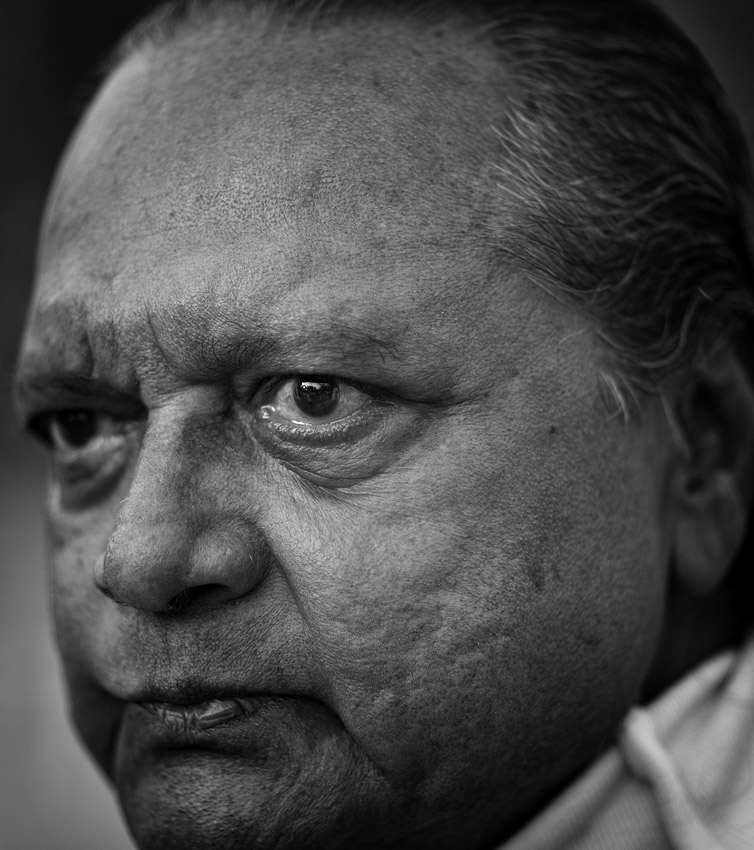
Anthony Prabhu Gonsalves
5D, 85L II
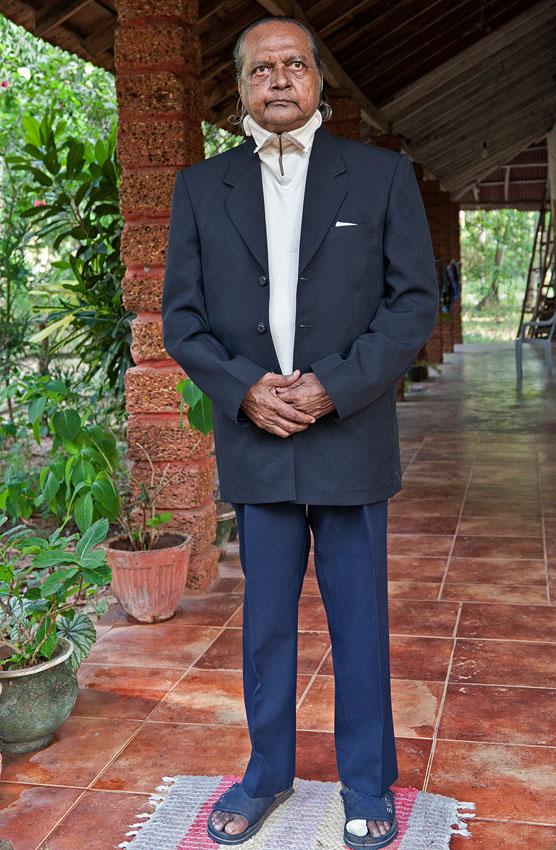
At home in Majorda, Goa (2008)
5D, 24-105L
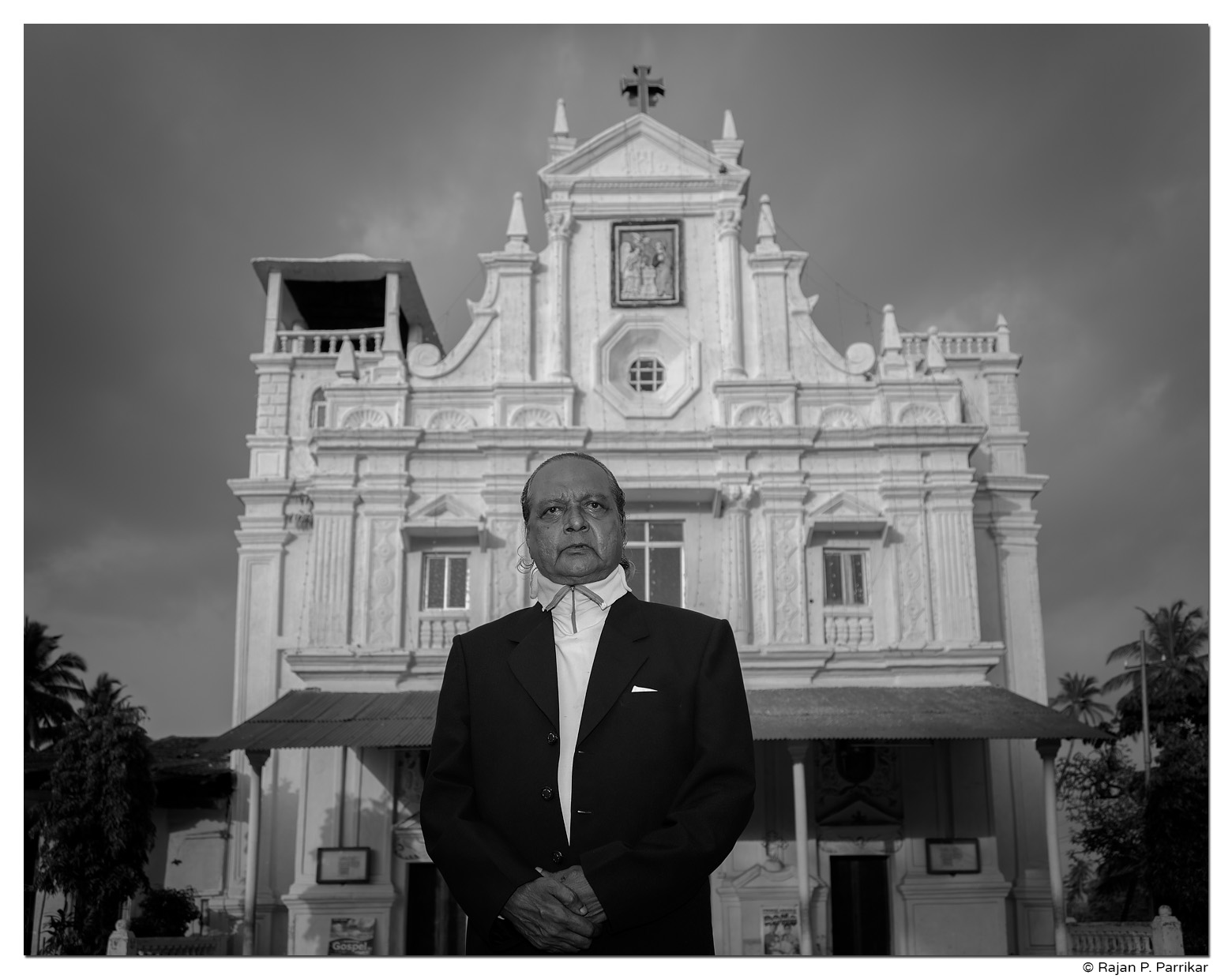
At the “Mother of God” church in Majorda (2008)
5D, 24-105L
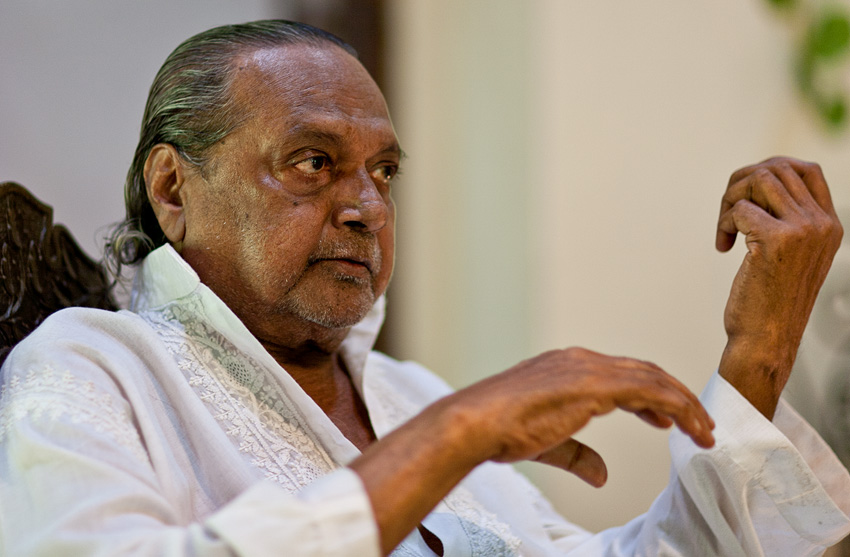
Speaking on violin technique (2008)
5D, 85L II
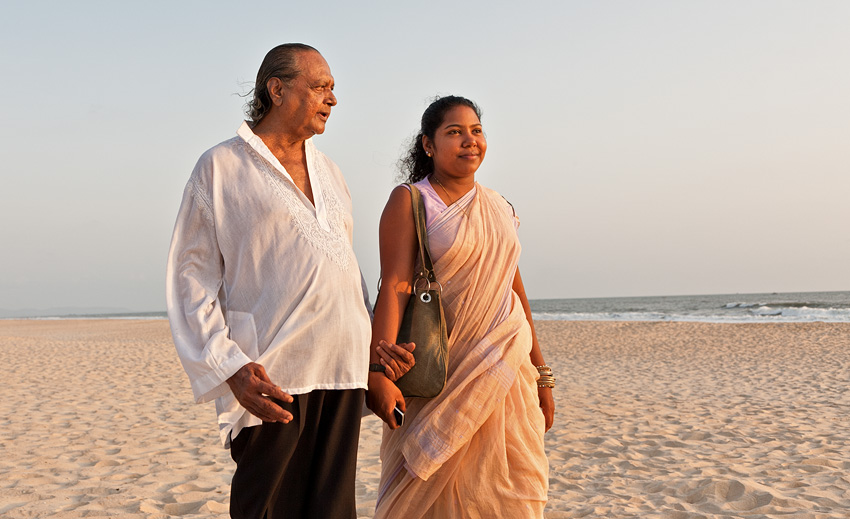
Anthony-bab with daughter Laxmi Gonsalves at Arossim (2008)
5D, 24-105L
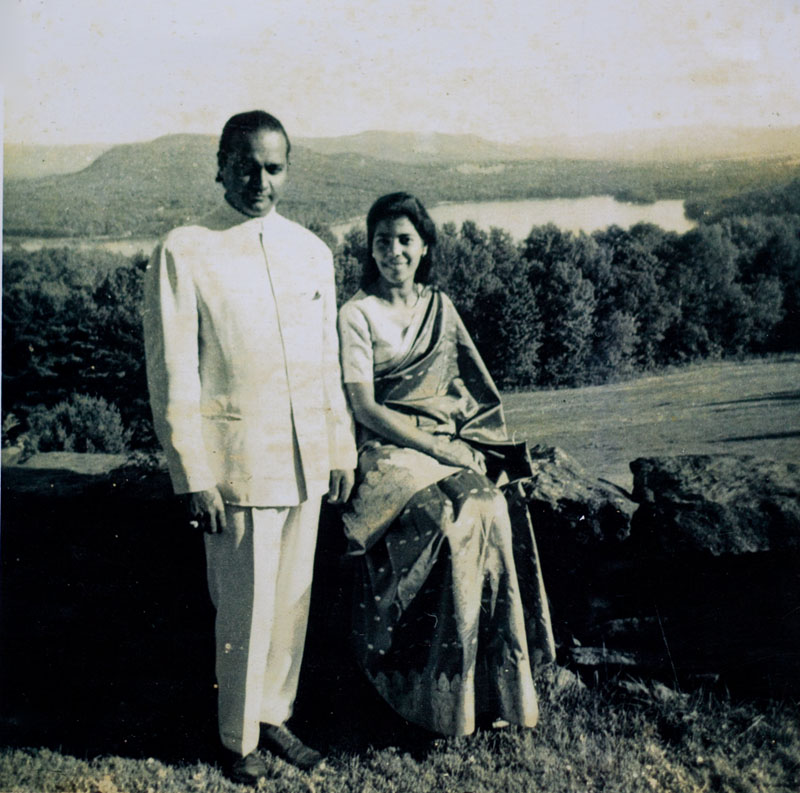
Anthony-bab and wife Melita in upstate New York in 1965
Photo courtesy of: Laxmi Gonsalves
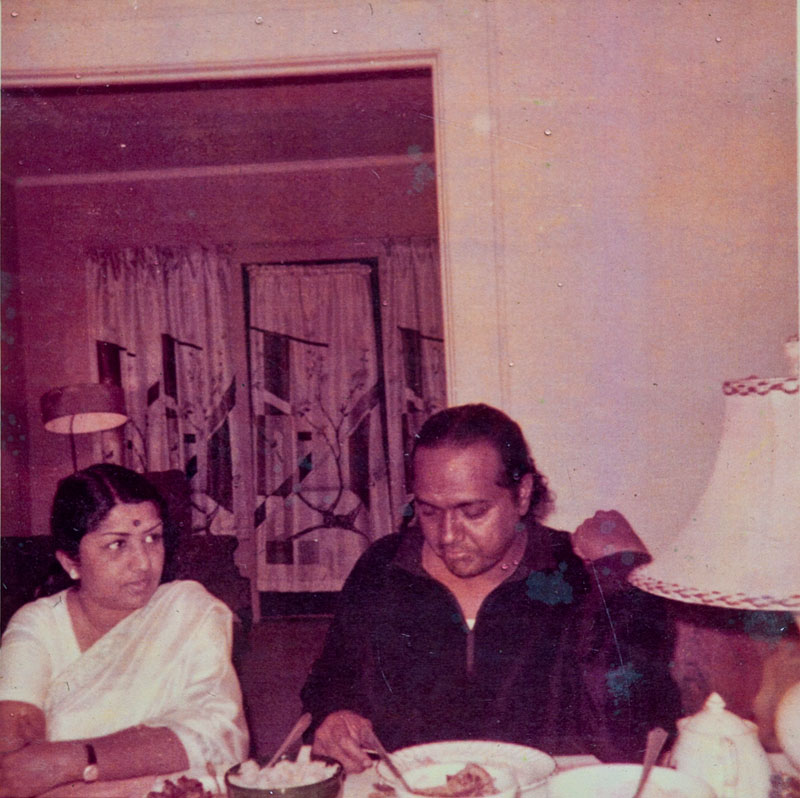
Lata Mangeshkar at Anthony's home in Syracuse, New York (1967)
Photo courtesy of: Laxmi Gonsalves
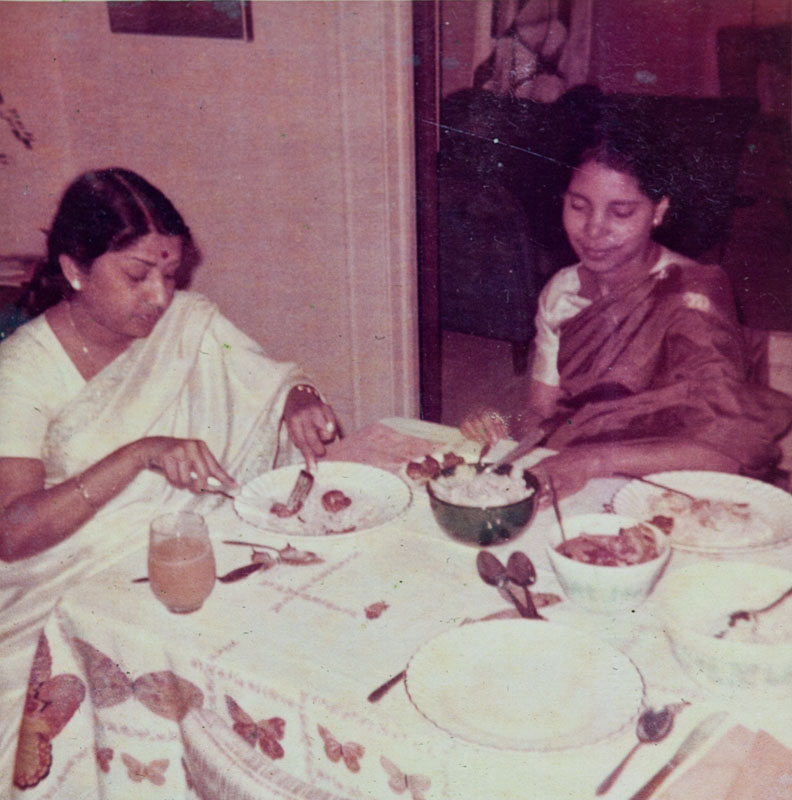
Lata Mangeshkar with Melita Gonsalves in Syracuse (1967)
Photo courtesy of: Laxmi Gonsalves
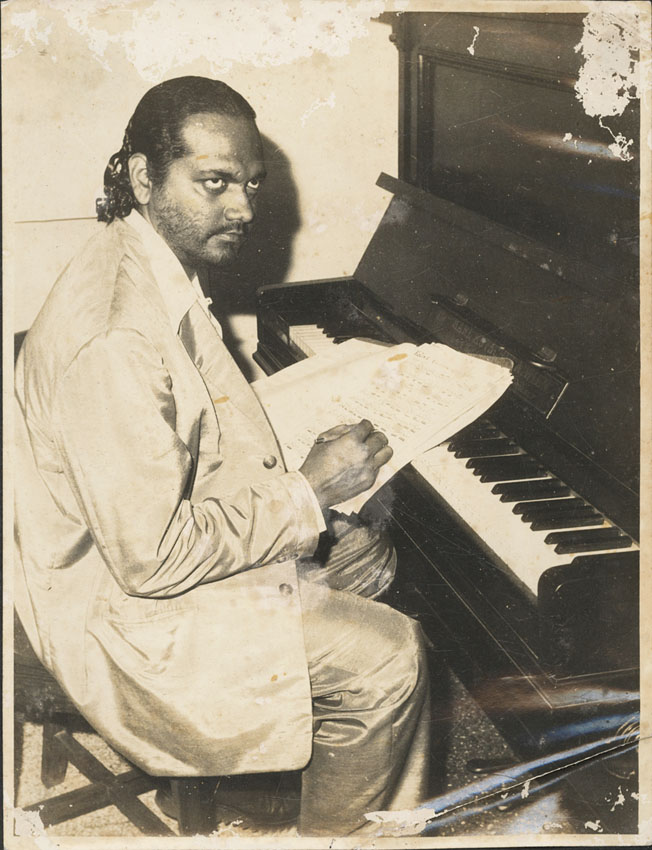
The maestro at his flat in Bandra in 1961
Photo courtesy of: Vivek Menezes
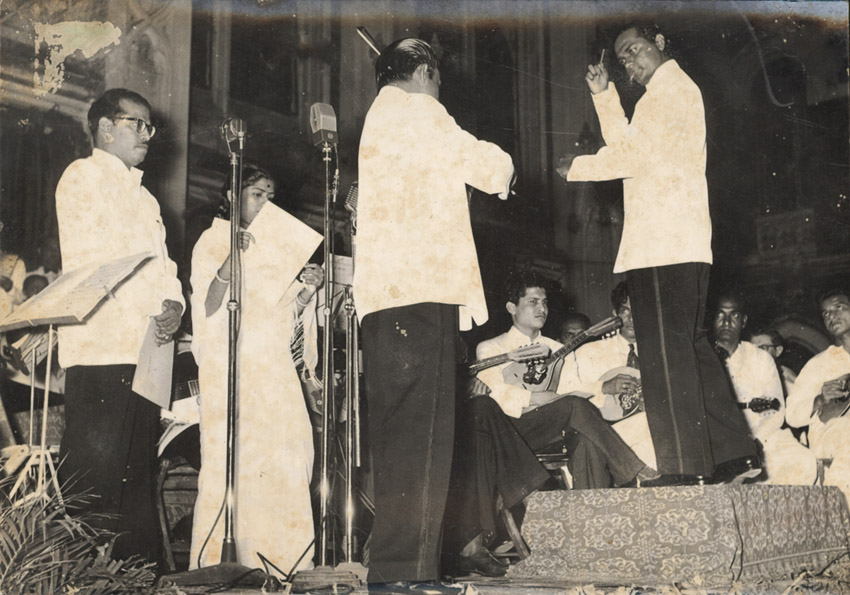
Anthony Gonsalves conducting Lata Mangeshkar and Manna Dey at St. Xavier's Quadrangle in Bombay (1958). Also seen are Pyarelal on the violin and Laxmikant on the mandolin.
Photo courtesy of: Vivek Menezes
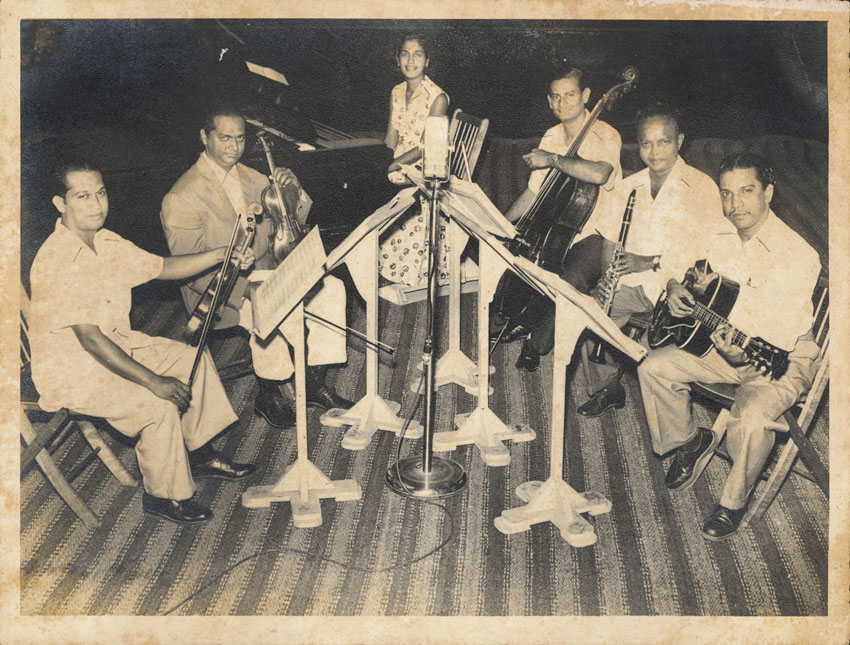
Goan Quintet: (L-R) A.P. Dourado, Anthony Gonsalves, Lucila Pacheco, Luis Correia, João Anton Noronha, Bonny D'Costa at Mehboob studios (1958)
Photo courtesy of: Vivek Menezes
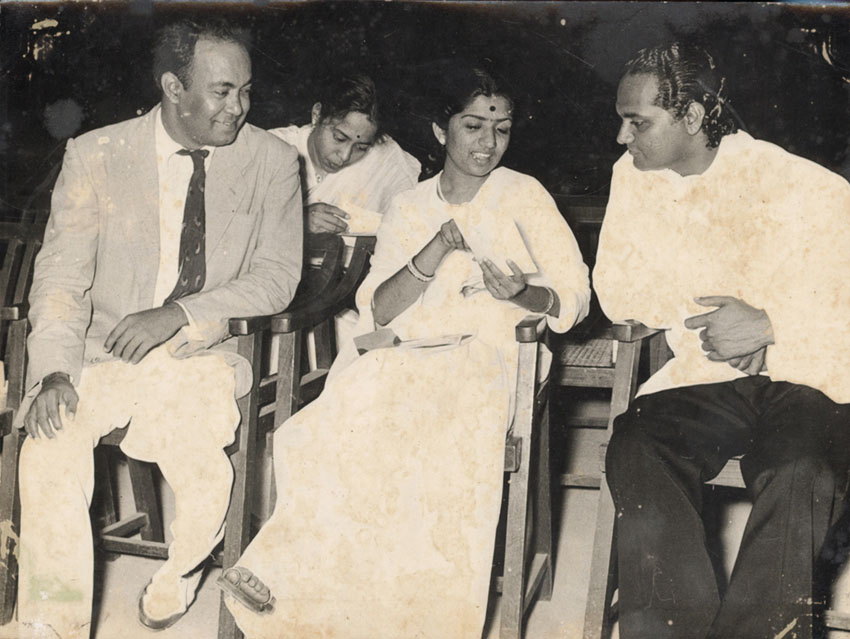
(L-R): Joseph Maski, Lata Mangeshkar, Anthony Gonsalves, in 1958
Photo courtesy of: Vivek Menezes
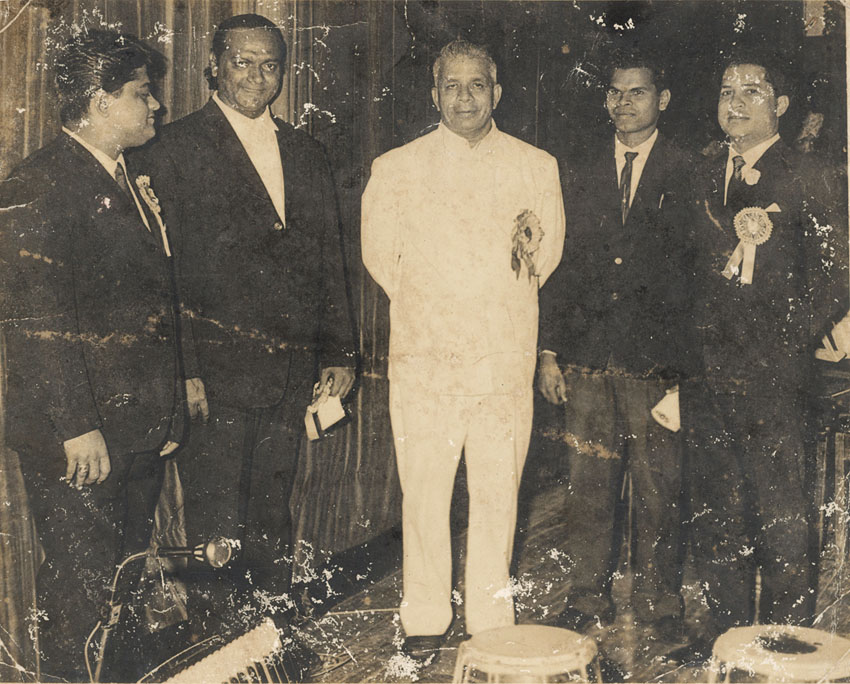
Laxmikant-Pyarelal Nite at Shanmukhananda Hall in 1963: (L-R) Pyarelal, Anthony Gonsalves, Goa's 1st Chief Minister Dayanand Bandodkar, Unknown, Laxmikant
Photo courtesy of: Vivek Menezes
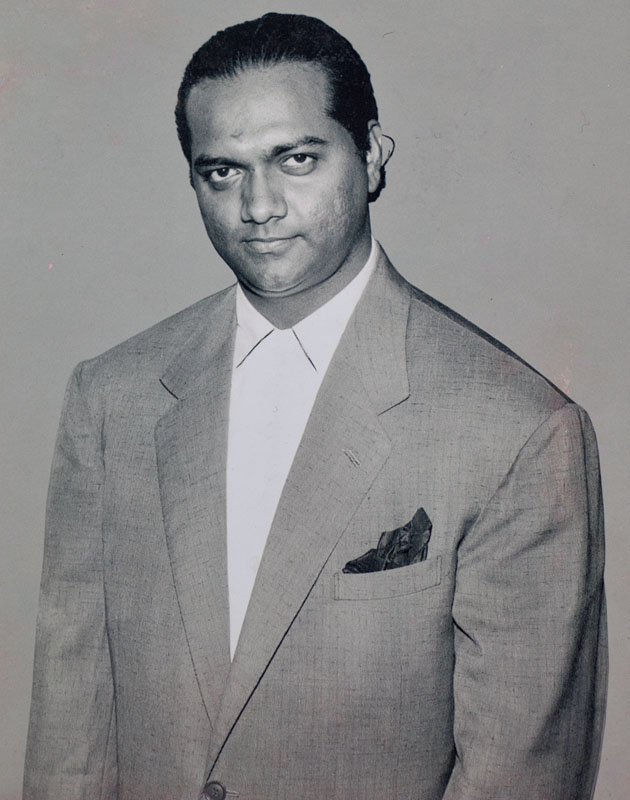
As a young man...
Photo courtesy of: Laxmi Gonsalves
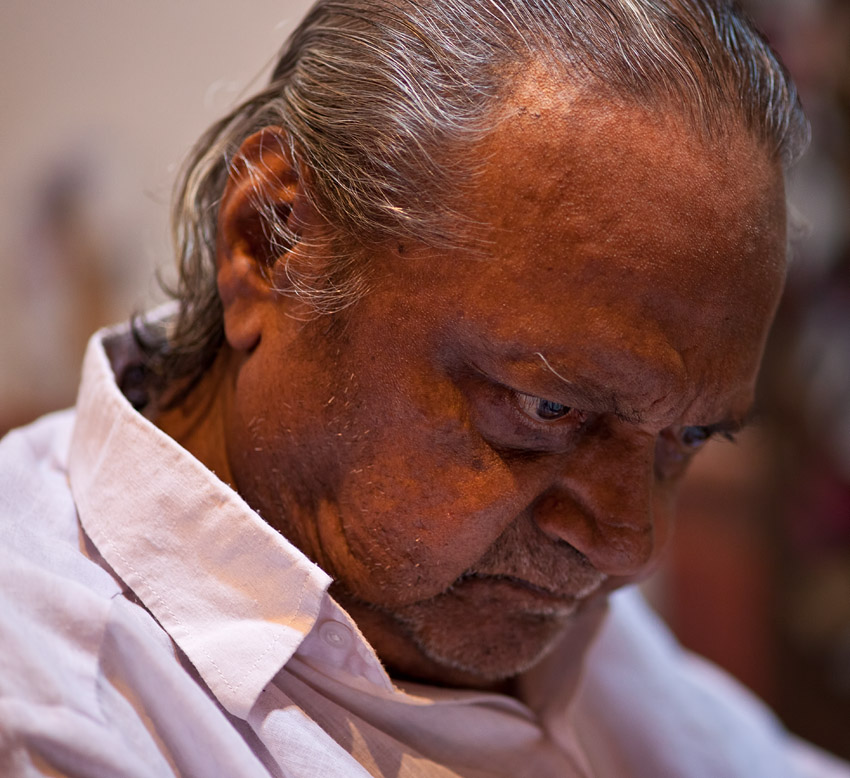
...In July 2011
5D Mark II, Zeiss ZE 100 f/2 Makro Planar
More of my conversation with Anthony Gonsalves in May 2008 here –





i will visit his home in Goa. Thanks for the information about him
[…] ANTHONY GONSALVES AND MS. LAXMI GONSALVES (PHOTO CREDIT:RAJAN PARRIKAR) […]
Excellent write up of one Goa’s great sons by Rajan Parrikar.
Thanks for the write up on Anthony Gonsalves.
thank you Mr. Rajan for the Article.
ITs a beautiful artical. I am here in USA and want to buy DVD from Shrikant joshi. How can I get it?
This is monumental work that is being shared by Mr. Parrikar. Can’t thank you enough. God Bless.
Thanks a lot for sharing this information. I had no idea about the genius of Anthony Gonsalves.
Rajan
I really enjoy the treasure you share with us.
I have been following your articles,knowledge and musical clips.
Thanks for great work
Dilip
a very moving piece. the photos are a treasure. i have been reading your articles on the various raags for many years now, here and at SAWF earlier. they are so full of instructive material, especially the audio clips of Pandit Ramashreya Jha “Ramrang”. love it all.
great story great photos… thanx rajan … i heard about this master but not had opportunity to know so much… i’m recently visiting your site… i particularly loved your piece on bhimpalas…
Thanks Rajan-bab.
Fantastic post as always for sharing this wealth of resources just like music library!
I am a musician from Sydney Australia. This is an extraordinary article from you (like all others). Truly brought tears to my eyes.When shall Bollywood music industry learn? How many times will it turn its back towards its own foundations?
Its nice photos . Such a remembrance of old memories . Thanks for sharing.
movie reviews
Excellent tribute to Anthony-bab!
Well put Belinda. But we do not know who did what, and who did not. In the failings of a society we all get implicated, much as we may loather it. But often for most individuals it is hard to see things as Margaret Bourke-White says: To understand another human being you have to gain some insight into the conditions that made him what he is. Hopefully more Goans will continue to reflect on such thoughts. Rajan has done his share in giving us a glimpse. In the same vein as Gonsalves, there are many Hindus as well as other musicians and those in various modes of being — not necessarily connected to the arts who deserve at the very least a compassionate glance; and more so if one thinks in terms of/value the meaning inherent in, caritas, and agape.
A touching tribute, but it gives me physical pain, that someone of his genius should be treated like an also-ran during his lifetime and then hastily pushed up on a pedestal after his death.
The younger generation is looking for role models. Anthony Gonsalves is a better role model than most. He was not afraid to take chances and not afraid to share his knowledge.
I also fault Lata Mangeshkar who could have done much to spread recognition and awareness of this man.
Here is a blog post on Anthony Prabhu Gonsalves written with verve, sensitivity and sincerity by Rajan Parrikar. Rajan is a passionate being who calls a spade a spade, like referring to Bacchan’s humor as oafish nonsense (I can now die). The other thing Parrikar points out is: Kishore Kumar‘s pronunciation of “Gonsalves” even today grates on every Goan ear. The syllable “Gon” is phonetically close to “gone,” not to “lone.”
In the area of music — film music in India very little is know of the contribution of the Christians, and worse barring a few very little is understood by those whose entire being appears to be propped up by that music. The point is simply that very few understand how influences, mentorships, resonances and other phenomena lead to satiation in ones being. It is such awareness, which have made your music heroes who they are in your eyes today as also the confusion as to what constitutes influence which help one forge new perspective albeit often with the same raw materials. The big names who interacted with Gonsalves were not fools so why are do many of their fans arrogate peculiar notions unto themselves. Just look at the photo of him conducting and then some poor comparisons will come to mind. I am making a point. He has something to give our directors and they were ready to receive it. They needed what he had to offer and they saw it was good.
So why is that? Give that a thought. A clue: The modernity that many of us imbibe so comfortably has come at a price in many ways on the part of a lot of specific and rigorous productivities on the part of others, who are not in the majority. They are part of India’s minorities. This is not baseless, nor is intended to take the shine away from the big names; rather, it is to draw attention to the base on which ones heroes stand tall in our own eyes.
THANK YOU Rajan.
Wonderful man. केसकर was a bigot. The harm that these kind of people have done is immense . Anthony was brilliance beyond his time . His memory and work will live on in crores of Indian hearts ,while people will ask Keskar who ? The man who banned the harmonium on AIR ? Ha!
Rajan Saheb,
I cannot in words tell you how much I admire your work in creating the musical blog with your own personal touch. This repository is the place to find that elusive essence that pervades all that is nadabrahma.
please accept heartfelt gratitude and best wishes
Dear Rajan sahab,
I have been a great fan of your website and not to mention your impeccable language. Your active love and respect for Indian Music is very much admired. Keep up the good work. Best wishes to you.
shreesh
Thank you for this very informative & interesting interview with a great legend. I accidentally chanced upon it. This certainly deserves wider publication.
Great story. It should be in the paper.
Great interview…..great work, Rajan
Amazing work, Rajan! Thanks for sharing these incredible pictures. I am deeply touched by your personal touch and perfection.
Thank you, Rajan, for enlightening me some more yet .
Thank you Rajan for exposing talented Goans to the wider world. We are downgraded by India ours is a unique talent without which Bollywood would be a shambles for our composing of music made Bollywood films and films songs entertaining.
Thank you. Thank you very much.
Great picture tribute to a great artist. Here is wishing him all the health. Many thanks for bringing this to our notice. Is the entire interview available anywhere on your website?
[…] here: My Name is Anthony Gonsalves Posted in General Tags: 24-105l, 85l ii, bombay, composer, composers, goa, keskar, movie, time […]
Great writeup. Thanks for sharing.
Great job, as usual, Rajan.
I saw him last year at the Kala Akademi where he was honored for his great talent. He looked old and frail. But from the photos displayed at the Akademi he cut quite a dashing figure as a young man.
Chris
Thanks Rajan. Great piece.
Thank you Rajan.
That is a lovely photoblog with a personal touch. The addition of names to the photographs adds to their significance.